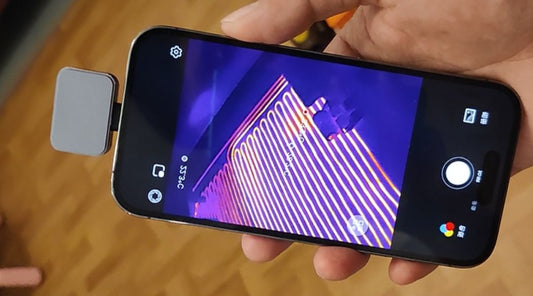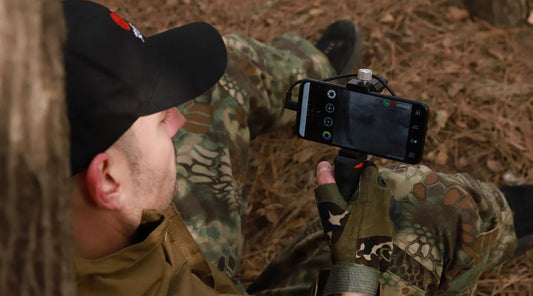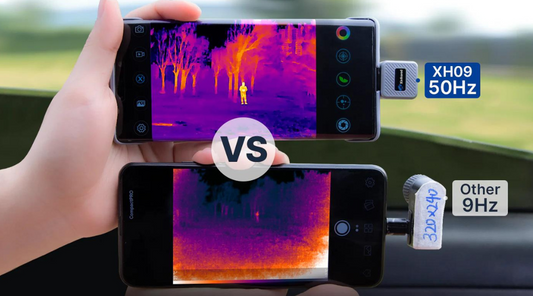How to Locate PCB Fault Localization with Thermal Imaging
Have you ever wondered how those tiny printed circuit boards (PCBs) that power our electronic gadgets work, and what happens when they go awry? Well, fret not! In this blog post, we're going to dive into the world of PCBs and show you how thermal imaging can be your trusty sidekick in tracking down those elusive faults. Buckle up, because it's about to get interesting!
PCBs are the unsung heroes of our electronic devices. They connect components, control signals, and make sure your smartphone, coffee maker, or gaming console runs smoothly. However, just like any hero, PCBs have their weaknesses – they can develop faults. These faults can range from short circuits to overheating components, and they can seriously mess with your gadgets.

What Can Thermal Imaging Do
Enter thermal imaging, our secret weapon for PCB fault localization. Thermal imaging works by capturing the heat emitted by objects, creating a visual representation of temperature differences. It's like having X-ray vision for electronic devices! But how can this technology help us locate PCB faults? Let's break it down.
Preparing for the Mission
Before embarking on your quest to find PCB faults, you'll need to gather some tools:
- Thermal Camera: This is your primary weapon. Make sure it's calibrated and ready to go.
- Thermal Imaging Software: To analyze the images you capture.
- Access to the PCB: Ensure you can safely access and power up the PCB.
Safety first! Always remember to take necessary precautions, such as wearing protective gear and working in a controlled environment.

The Thermal Imaging Inspection
Now, let's put that thermal camera to work:
- Setting Up: Configure your thermal camera with the right settings and calibration. Think of it as fine-tuning your radar.
- Scanning: Focus on specific areas of the PCB. Think of this as your treasure map. Capture thermal images as you go.
- Identifying Anomalies: Keep an eye out for hotspots, cold spots, or unusual temperature gradients. These are your clues.

Analyzing Thermal Data
With your thermal images in hand, it's time to play detective:
- Import Data: Use thermal imaging software to import your data.
- Image Enhancement: Enhance the images for better clarity and detail.
- Spotting the Culprit: Look for patterns in the thermal data. Is there a component running hotter than it should? Is there an unexpected temperature drop somewhere?

Troubleshooting PCB Faults
Now comes the exciting part – hunting down those faults:
- Interpreting Data: Understand what the thermal data is telling you. Is there a component failure or a short circuit?
- Common Fault Patterns: Familiarize yourself with common fault patterns and their thermal signatures.
- Narrowing It Down: Use the thermal data to pinpoint the fault's location. It's like following breadcrumbs.
But remember, thermal imaging is just one piece of the puzzle. You may need other diagnostic tools like a multimeter or an oscilloscope for a comprehensive analysis.
Reporting and Remediation
Once you've cracked the case, it's time to report your findings:
- Create a Fault Report: Document your discovery, including thermal images and a summary of your findings.
- Collaboration: If necessary, collaborate with other experts to devise a plan for repairs or component replacements.

Best Practices and Tips
Before we conclude our adventure, here are some tips to make your thermal imaging journey a success:
- Continuous Learning: Keep honing your skills and staying updated with the latest thermal imaging techniques.
- Equipment Maintenance: Regularly maintain and calibrate your thermal camera equipment to ensure accuracy.
- Safety Reminders: Never compromise on safety. Follow best practices to protect yourself and the equipment.
And there you have it – a thrilling journey into the world of PCB fault localization with thermal imaging. It's a powerful tool that can help you save your beloved gadgets from mysterious malfunctions. Remember, every hero needs a trusty sidekick, and for PCB troubleshooting, thermal imaging is your steadfast ally.
So, the next time your electronic device acts up, don't fret. Grab your thermal camera, embark on a quest for clues, and unlock the secrets of your PCB!




